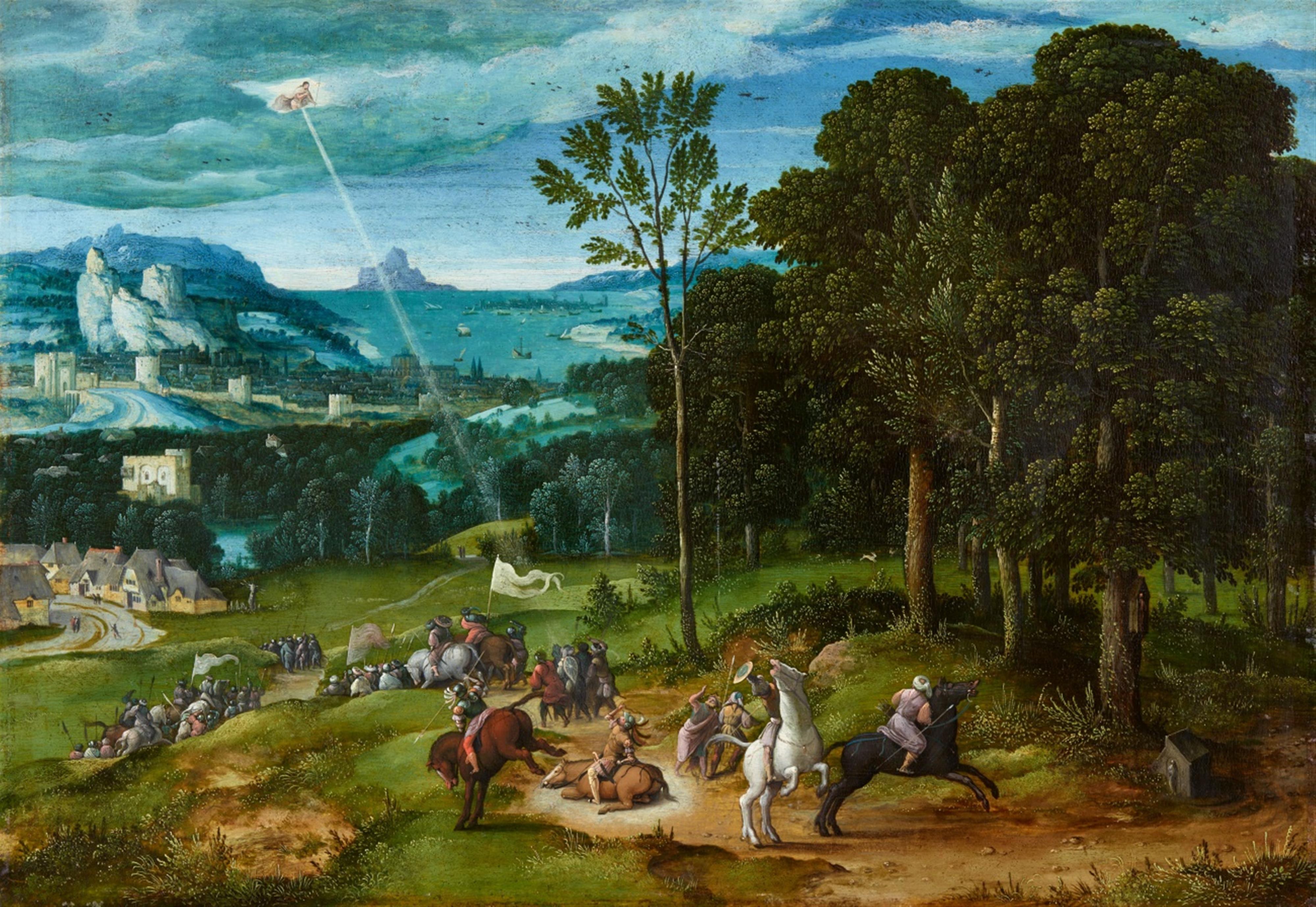Master of the Female Halflengths
Panoramic Landscape with the Conversion of Saint Paul
Oil on panel (parquetted). 30.5 x 43.9 cm.
The Master of the Female Half-Lengths is an anonymous master whose precise origins are still unknown. Discovered at the end of the 19th century, he was named after the Harrach Concert (Rohrau Castle), a composition depicting three young ladies playing music. In 1935 Max J. Friendländer attributed him a corpus of sixty-seven paintings illustrating religious subjects and numerous pictures of half-length elegantly dressed women in the guise of Mary Magdalene, a much venerated Saint in the Northern Netherlands. Some of his paintings include jewel-like landscapes, revealing a close link with Joachim Patinir.
Several scholars have tried to identify the Master but none has yet succeeded. F. Wickhoff thought he could be French while O. Benesch believed he was from Bruges and S. Bergmans from Mechlin. More recent research has revealed the influence of Joos van Cleve, Jan Massys, and Bernard van Orley in his style, indicating that his workshop may have been located in Antwerp or Brussels. The question remains unsolved to this day.
The Conversion of St Paul is a unique example of its kind in the production of the Master of the Female Half-Lengths. The subject is extremely rare in the Flemish school of the early 16th century, and Patinir never painted it. The illustrated episode comes from the Acts of the Apostles (9: 3-7) describing the appearance of Christ to Paul on his way to Damascus. In the foreground a dazzling light coming from the heavens creates chaos around Paul, whose horse has fallen on the ground. Unconscious of the divine phenomenon, the soldiers continue their way, peacefully crossing the wooded hills towards a distant city near a bay and surrounded by rocky mountains and walls.
Alexander Wied's attribution to the master in 2004 is based on various relationships to the painter's style and works. Most striking is the similarity in composition and landscape between the present Conversion and the “Landscape with Hunting Party” in Geneva (Musée d'Art et d'Histoire). Both are identical, albeit reversed. The same group of trees appears on the side next to a spindly tree whose branches and sparse foliage is silhouetted against the sky. Flocks of birds, an element never included by Patinir, can be seen in both compositions. Lastly, both backgrounds offer a panoramic view over a landscape with a high horizon line and blue mountains overlooking a port city.
Many features in the Conversion of St Paul are typical of the Master's formal vocabulary, like the mossy trunks of the trees, the ground carpeted by grass and ferns, and the paths strewn with pebbles. As in the “Landscape with Flight into Egypt” (Raleigh, Museum of Art) and the “Landscape with Rest on the Flight into Egypt” (Vienna, Kunsthistorisches Museum), the nature conveys a deep sense of stability, harmony, and peace. In his study published in 2004, Wied praises the high quality of this previously unknown work. He dated it around 1545, at the time of the Master's mature period.

